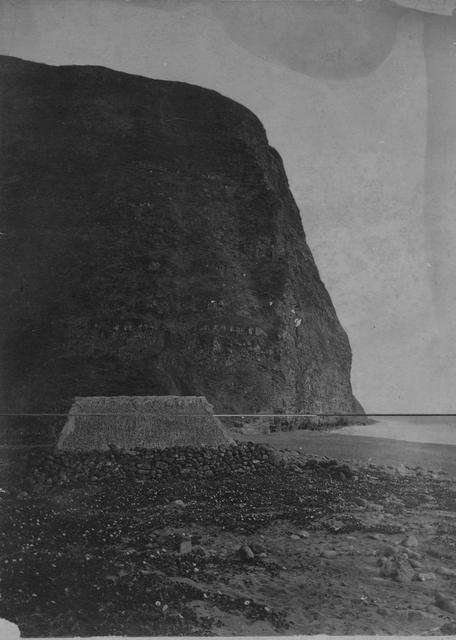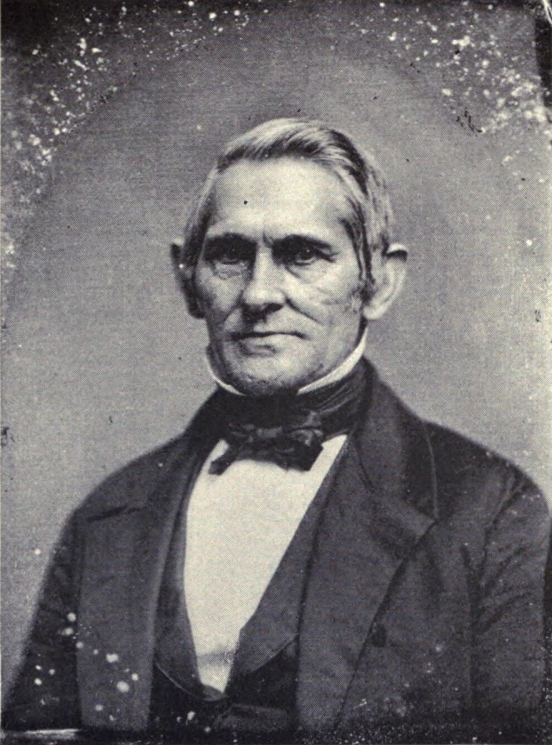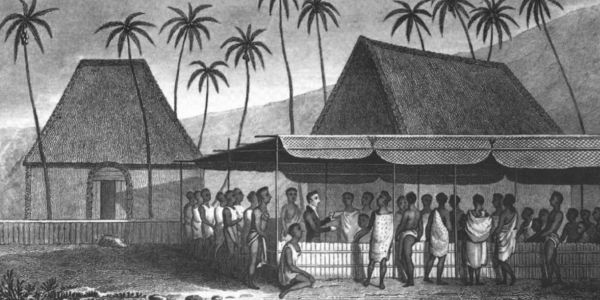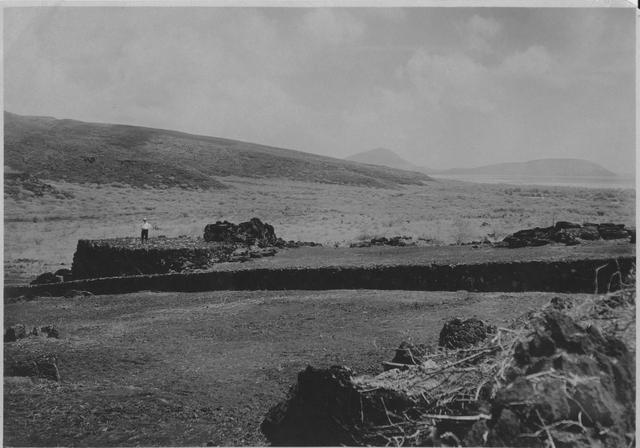
Letʻs return now to Hawaiʻi.
The thoughts of the Congregationalist missionaries who first set sail from Boston for the Sandwich Islands on board the bark Thaddeus are accessible to us through their journals and letters, which are suffused with piety and instruction. Now and again, a hint of confusion and estrangement appears in their writing, along with an occasional note of frustration — a moment’s revelation, followed by remorse and guilt, but nothing more. A few of them would be enthralled by island life and the Hawaiian people, and stay long after they had fulfilled their mission; others left as soon as they could, and some even before their time of service was complete. Most of the journals kept by the missionaries on board the Thaddeus dutifully begin on the first day of their journey, the 23rd of October, 1819, and then fall silent until taken up a few weeks later, their writers too seasick to write another word until the middle of November. When she recovered, Mercy Whitney, whose husband Samuel was a lay teacher, made a schedule of her day’s activities:
5:00 private devotion and sewing
7:30-9 breakfast and exercise
9-12 writing and study
12-1 recitation and conversation
1-2 dinner and private devotion
2-5 writing and reading
5-6 study of the Hawaiian language
6-7:30 tea, conversation, and exercise
7:30-9:30 private and family devotion
In a letter dated December 20, two months after the kapu system in the Sandwich Islands was overthrown and the Hawaiian gods and their temples destroyed, Lucy Thurston, the new wife of the seminarian Asa Thurston wrote to her father from the Thaddeus. The ship was twenty-four feet wide and eighty- five feet long, and it would be three more months before it reached the Sandwich Islands:
Chests, trunks, bundles, bags &c., were piled into our little room six feet square, until no place was left on the floor for the sole of one’s foot…With such narrow limits, and such confined air, it might be compared to a dungeon. This was with me a gloomy season, in which I felt myself a pilgrim and a stranger…Our whole family, with the exception of the natives, were all under the horrors of seasickness, some thrown on their mattresses, others seated in clusters, hanging one upon another, while here and there individuals leaned on the railing, or supported themselves by hanging upon a rope…We had entered a new school.

Daniel Chamberlain, a farmer who was traveling with his wife and their five children, wrote that the small cabins were so packed with their belongings that it was necessary to walk bent in two, crawling over chests and trunks on their hands and knees, and banging their heads against the walls and ceiling. Halfway through the journey, Samuel Ruggles, a schoolmaster, was exultant to collect three pints of drinking water from the tip of his umbrella. At the end of January, in the Strait of Le Maire, near Tierra del Fuego, the ship was blown off course by high winds. Lucy Thurston wrote:
Sails were taken down and we were carried before the wind, The incessant and violent rocking of the vessel keeps me here laid prostrate upon my couch. Oh, the luxury in feeble health of reclining on a bed with tranquility and ease! But I must not, I will not repine. Even now, though tears bedew my cheeks, I wish not for an alteration in my present situation or future prospects. When I look forward to that land of darkness, whither I am bound, and reflect on the degradation and misery of its inhabitants, follow them into the eternal world, and forward to the great day of retribution, all my petty sufferings dwindle to a point, and I exclaim, What have I to say of trials, I, who can press to my bosom the word of God.
Lucy asked the captain of the Thaddeus if the lives of the missionaries would be in danger in the Islands. He answered that while the natives were addicted to alcohol, which resulted in an occasional “bold assault,” the only threat of which she should beware was that of poisoning. “When they conceive a dislike, no intimation is given, but by these means they secretly seize on the first opportunity to accomplish their fatal purpose.” Theft, too, he added, could be a bit of a difficulty. He arrived on one visit with twenty-four shirts and left a few weeks later with three. It is not surprising that Lucy was terrified.
We were taught that unprovoked, the natives of these islands conspired the death of the great navigator, Capt. Cook, cut off vessels, murdered crews, and chewed the flesh of their enemies as the sweetest titbit of revenge. Conversing with the captain of our vessel, a few weeks before reaching these islands, in 1820, he remarked that he must get his guns out, for it was not safe to approach these islands without being in a state of defense. ‘What,’ I replied, ‘leave us, a feeble company, in a defenseless state, among a people you cannot approach without fire-arms?’ ‘Ah,’ said he, shaking his head, ‘it is not my wish to leave you in such circumstances.’

On the one hundred and fifty-eighth day, the missionaries saw the island of Hawai’i looming before them. The coastal village of Kawaihae was visible from a porthole, and Lucy watched apprehensively as a canoe of “natives with animated countenances” approached the ship. The canoe pulled alongside and the Hawaiians handed Lucy a banana. When she grabbed hold of it and tentatively passed them a biscuit in return, the natives called out, Wahine maikai, or “Good woman.” She impulsively threw them more biscuits, and when she repeated the word wahine, they shouted in delight. “Thus, after sailing eighteen thousand miles, I met, for the first time, those children of nature alone.”
Not so frightening, after all. But certainly repellent. The missionaries could not have landed in a place more unsettling, more provocative to their untried souls than the Sandwich Islands. Led to believe that they would find cannibals, sorcerers, murderers, and thieves, they must have been relieved that the heathens were only repulsive. Instead of terror, there was superiority, condescension, and ignorance.
The appearance of destitution, degradation, and barbarism, among the chattering, and almost naked savages, whose heads and feet, and much of their sunburnt swarthy skins, were bare, was appalling…Some of our number, with gushing tears, turned away from the spectacle.
Heiau at the top of what is now Koko Head Ave., in the Kaimuki neighborhood of Honolulu
